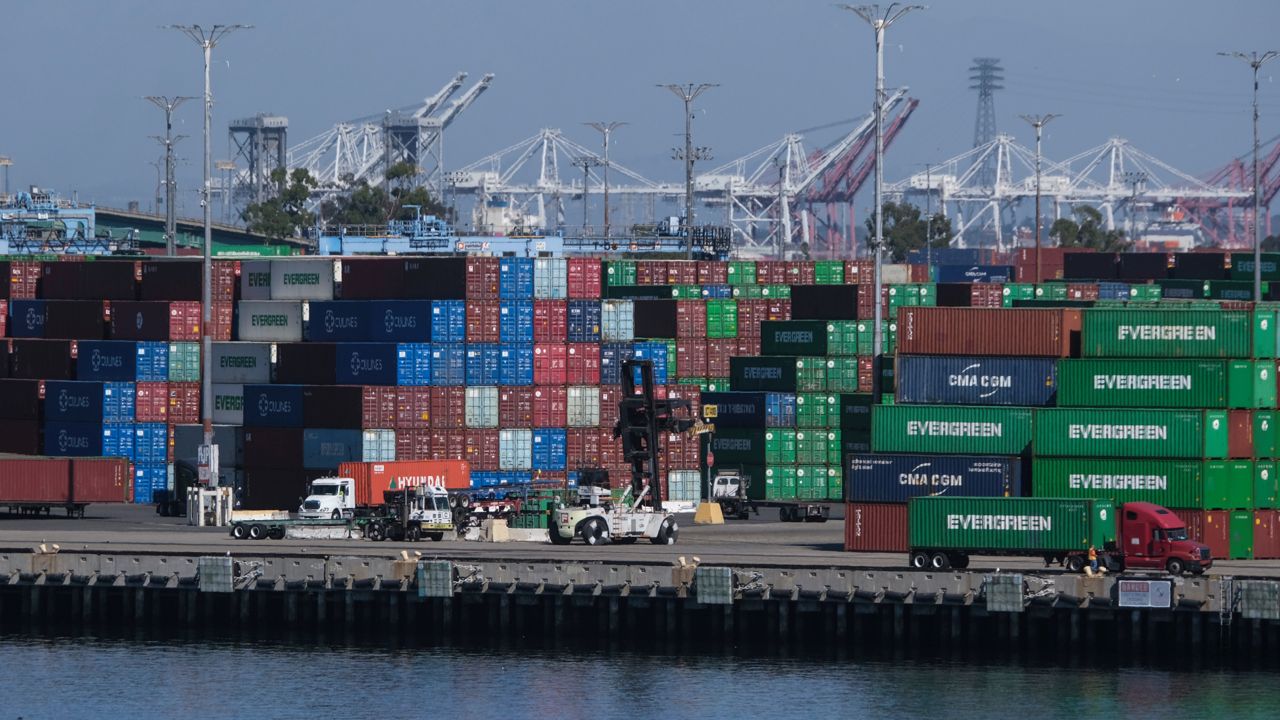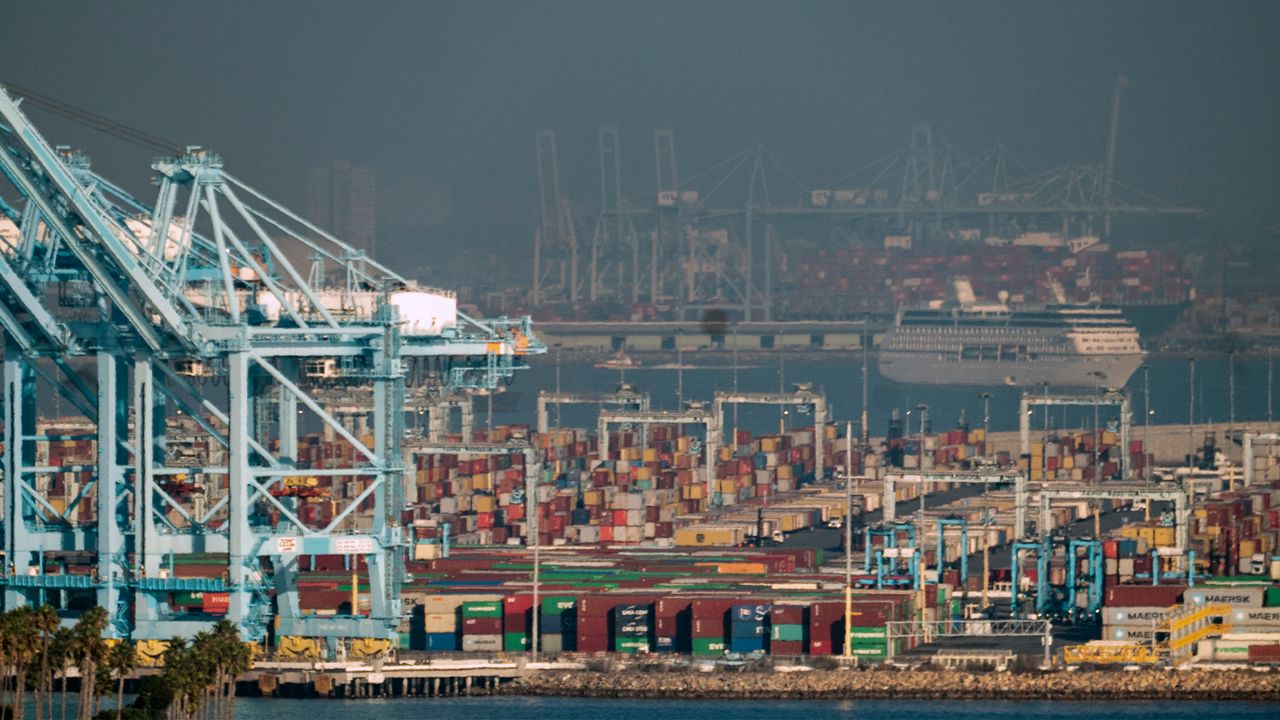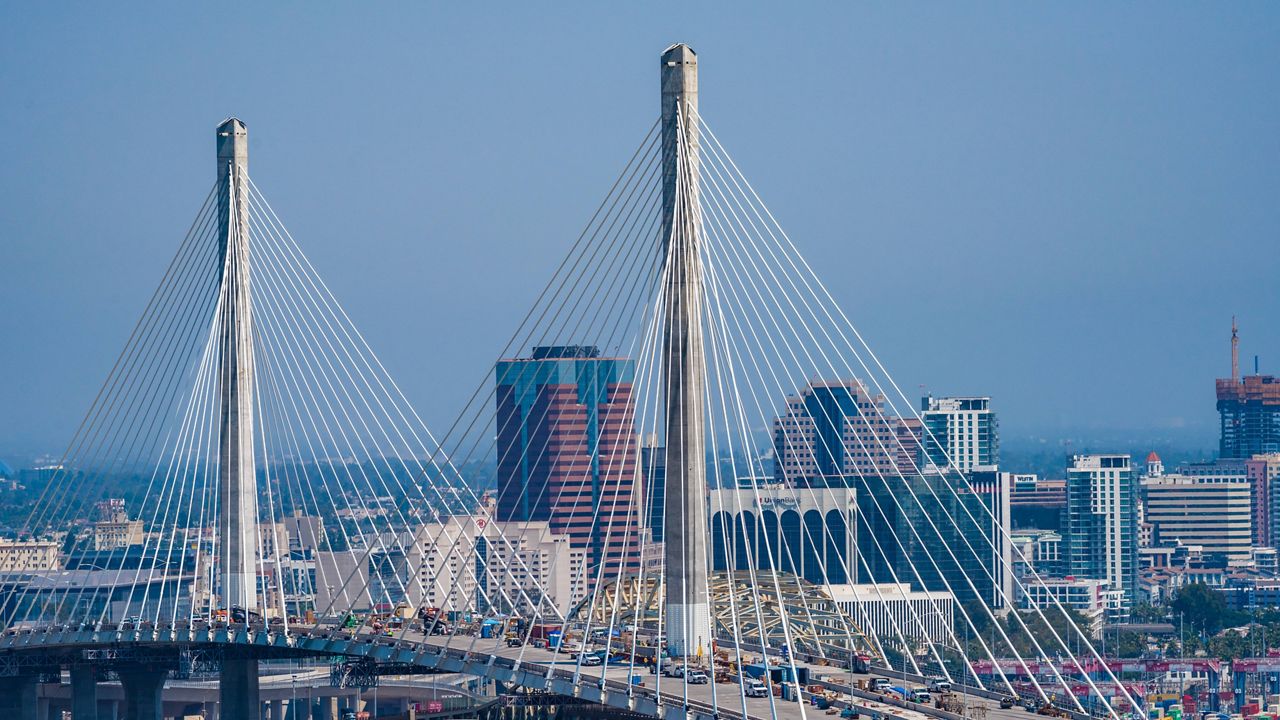SAN PEDRO, Calif. — U.S. Coast Guard investigators say it's likely an anchor hit and ruptured the pipeline, causing the oil spill off the coast of Orange County.
In fact, there might have been several strikes over many months due to the pipeline’s displacement, the damage done to the concrete encasement and the marine growth that sprouted nearby.
What You Need To Know
- An anchor strike likely caused the oil spill off the coast of Orange County, according to reports
- Given how busy and backlogged the ports are right now, there are many suspects
- There are more than 80 ships awaiting berth, and some are parked so far from the shore that they're unable to drop an anchor
- The wait time to get into the port complex is so long that some ships are dealing with a buildup of slime on the hull and overflowing sewage tanks
Given how busy and backlogged the ports are right now, there are many suspects. While underwater infrastructure is taken into account when placing ships awaiting berth, cargo ships routinely pass through the area where the leak originated.
The Port of Long Beach had its strongest August ever cargo-wise, and that was just the start of peak shipping season.
On Sunday, there were 87 vessels waiting just off the coast to get to the ports of Los Angeles and Long Beach. There is a nonprofit organization on duty at all hours monitoring each and every one of them.
J. Kipling Louttit, a retired Coast Guard captain, is the executive director of the Marine Exchange of Southern California. His team tells incoming ships where to drop anchor while they’re waiting to unload. Now, they're placing vessels in spaces so far out that the water is too deep to drop an anchor. They call this the drift area because the ships can’t help but shift with the wind.
“We’ve last needed drift areas in 2004, and we needed about six of them, and the record this time is 37,” said Louttit.
Think of the Marine Exchange like air traffic control for the sea. Louttit is dealing with problems they’ve never seen before because some ships are waiting multiple weeks, causing slime to build up on the hull and sewage tanks to fill up.
More problems could arise soon. Wind stronger than 35 knots is in the forecast. This activates the heavy weather protocols for vessels at anchor, meaning a second anchor must be kept ready, and engines remain on immediate standby — in addition to always having a watchstander on the bridge.
If the backlog continues to grow, Louttit has a temporary solution.
“If we really, really got uncomfortable with the number of ships that were in Southern California waters, somebody could just make the decision: Stop in the middle of the ocean,” he said.
On land, a lot is being done to move cargo quicker. The nearly $1.5 billion project to complete the Long Beach Container Terminal at Middle Harbor just wrapped. The final phase included a 4,200-foot-long concrete wharf capable of welcoming three massive ships at once. The terminal’s CEO, Anthony Otto, noted that the facility will be larger than the entire Port of Oakland.
"This additional capacity is badly needed right now," he said. "I think trade is strong and the capacity that we’re adding here is really something that’s coming in just the nick of time."
Both ports promised to expand the hours trucks can pick up and return containers.
While Louttit can say with certainty that a rampant virus and increased buying allowed the number of waiting ships to blossom, it’s not so clear what will bring us back to normal, where was only one, or even zero ships waiting for berth.
“I feel very comfortable sleeping at night 'cause I’ve got great people, great equipment and great port partnerships,” said Louttit.
Whatever the future holds, it’s a given that there will be more ships on the horizon.
The Marine Exchange is working with the Coast Guard and unified command as far as the investigation into the cause of the spill. In terms of traffic flow, Louttit said the spill had little impact.
The Coast Guard says the oil spill will make them take a second look at the placement of the ships trying to come to the San Pedro Bay Port Complex.











